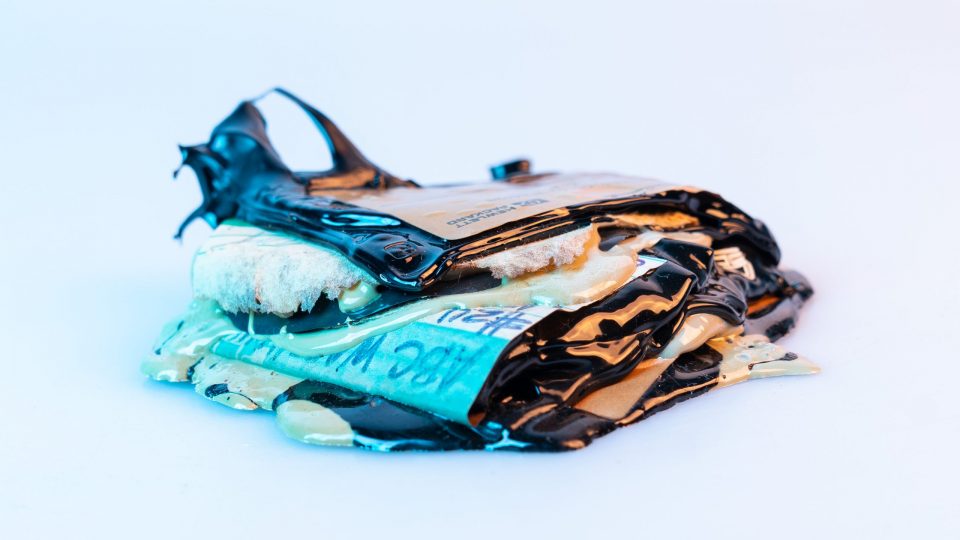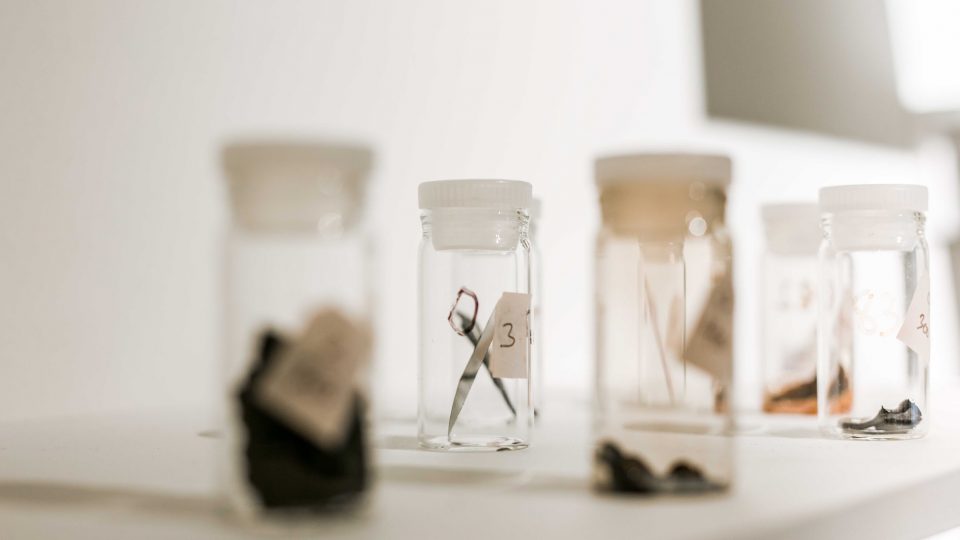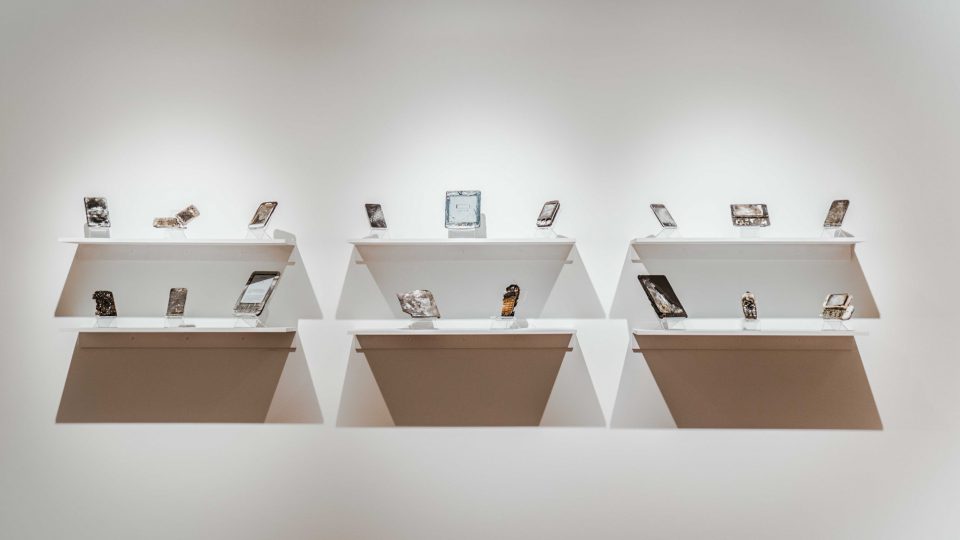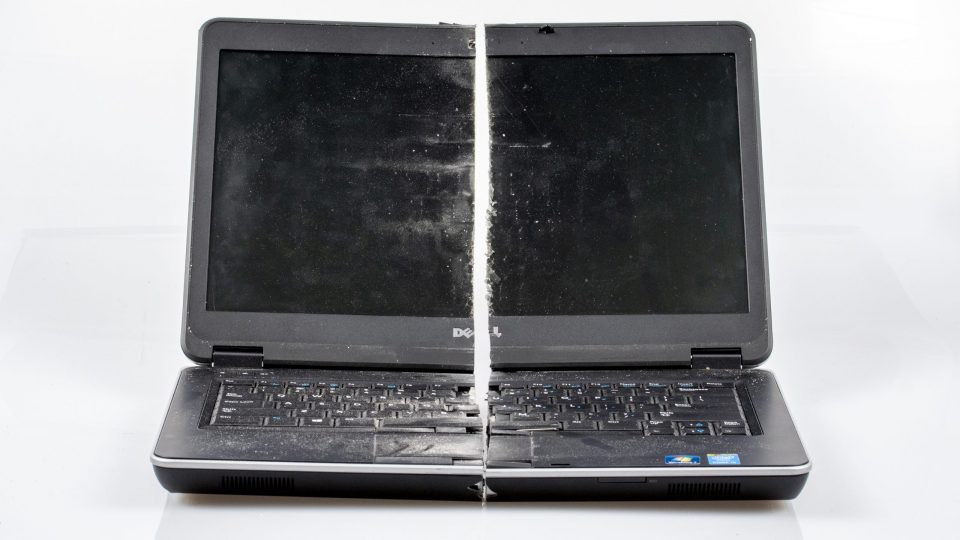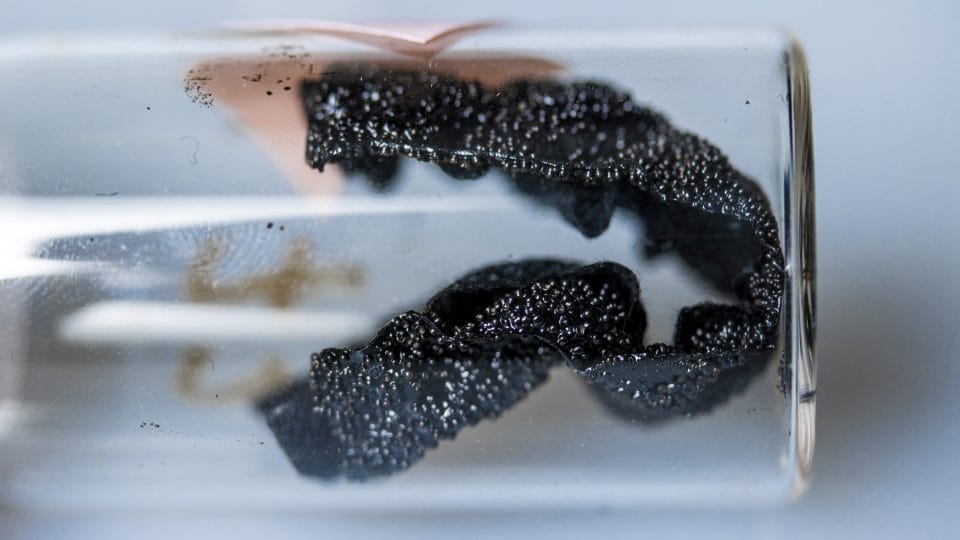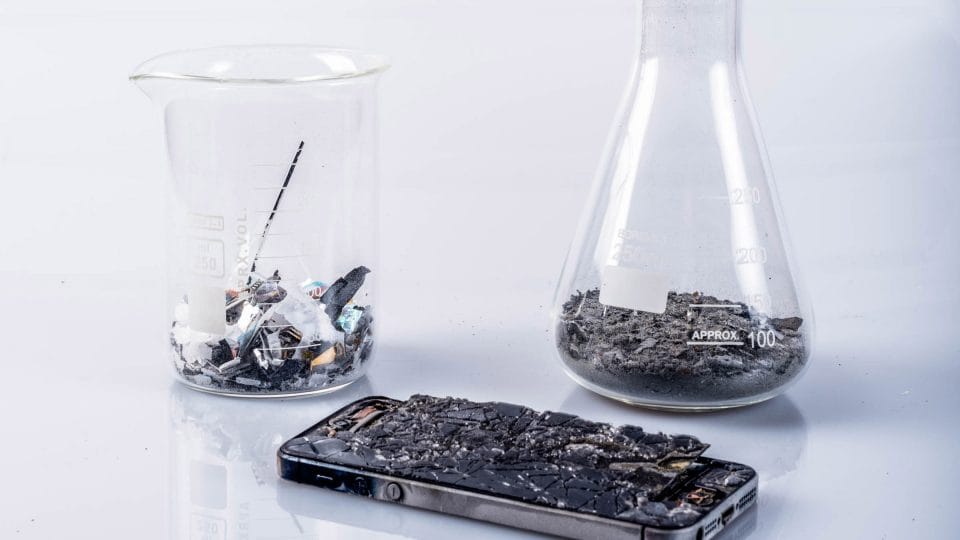Phossils are, more or less, fossilized phones. Here I subject media devices to extreme heat and cold, artificial pressure and geological time, or other intense conditions that weather and turn these materials into… something else. Through research, experimentation, and craft – including collaborations with biogeochemical and soil scientist Johannes Lehmann at Cornell University – I have tried to transform phones into crude oil, coal, or other fossil fuels, into synthetic archives and simulated relics for a future time. Cook, freeze, burn, smash, blend, and more… and put the results on exhibit, in beakers and tubes, on pedestals and stands, as archaeological finds and/or photographic images. Pictured are only a selection of these ongoing works.
Several of the Phossils series of sculptures also more readily reveal our lab/studio methods, and two of them break down over the course of the exhibition itself. These Ecokinetic Sculptures see a pile of phones in an air fryer, hard drives in a toaster, a water fountain cracking and peeling the glass of an iPhone (more quickly than you would expect), and a flipping hourglass that sands down a smart phone every sixty minutes.
Phossils are part of The World After Us: Imaging techno-aesthetic futures, a series and traveling exhibition of media sculptures that materially speculate on what our devices – phones and tablets, batteries and displays, etc – might become, over thousands or millions of years. Here I attempt to mimic geological time, as pressure and heat, with earth and clay – through chemical interactions or specialized machinery – on laptops and tablets, then display where that potential lies, as petrified-like LCDs or mangled and melted electronics, on pedestals in a gallery, or in beakers and tubes (Phossils). I also turn “dead media” computers into efficient planters for edible goods, food for mold, or seeds of their own growth – and show them as photos, videos, and sculptural forms (Server Farms). utilities see e-waste used as a raw material, transformed into useful tools or ink, while Drivers stage all these works as mediagenic images. The exhibition also sees a 250-plus square foot, wall-based installation alongside three, greater than human-sized towers of piled-on electronics and plant life.
What will digital media be and do, after us?
It is impossible for humans to truly fathom our planet on its own terms and at its own size, or conversely from the perspective of bacteria. But we can feel such things, through art and storytelling – making our aesthetic encounters both conceptually and ethically vital toward new futures. The World After Us questions how we move, think, feel, and act with the Earth and its inhabitants, both living and otherwise. At stake, whether in our everyday interactions or on a much larger scale, are the (digital) relationships between humans and the natural world on the one hand, between politics and commerce on the other.
The World After Us: Imaging techno-aesthetic futures will premiere at the Museum of Wisconsin Art | Downtown (MoWA | DTN) in the Saint Kate Arts Hotel in Milwaukee, WI, January 2020, and travel thereafter. It makes available a 200-page hardcover catalog, a short documentary, and an audio tour. It is generously supported by the UWM Office of Research.
Related texts/press:

